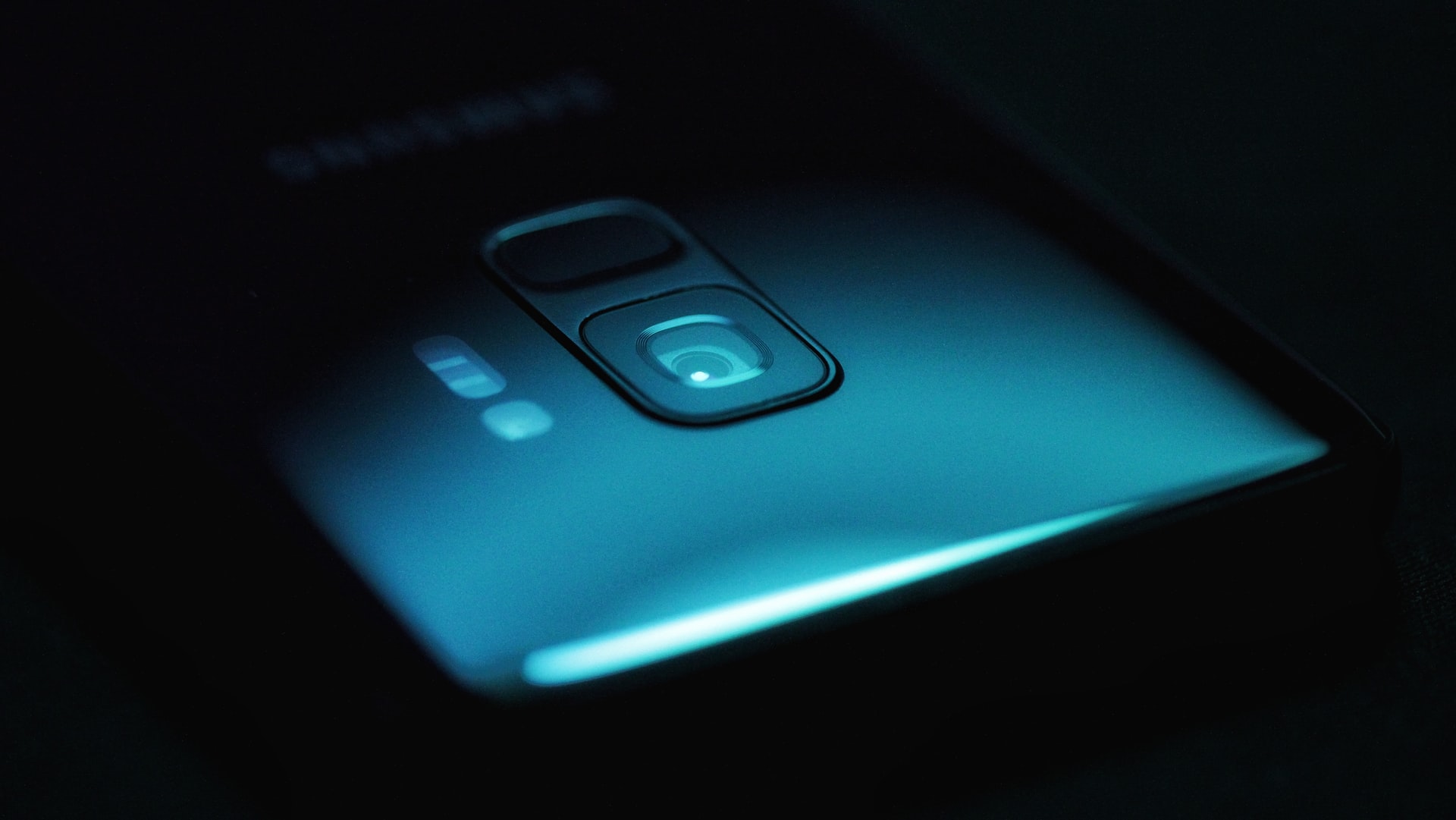
Cameras have been one of the vital aspects of smartphones’ sale these days. Even more- cameras are the intermediary to distinguish the flagship of a phone in today’s era. We have come a long way since the Kyocera VP-210- the first camera phone ever. Over the span of 20 years, we can see a drastic change smartphones have brought in the way we capture moments through photos. Nonetheless, cameras have been played in a deceitful manner as well. Cameras are one of the biggest selling point in smartphones and it’s crucial to know them before whirling your wallet around.
Understanding Smartphone Cameras
As we all know, camera sensors are shrink-ed down nearly the size of a grain in order to make them fit inside smartphones. Thus, they have non movable parts and hence, less versatility. In order to cope with this, multiple lens setup and computational photography was introduced. But primarily, all cameras work on the principle of first collecting light through lens and converting the light/photon into electric/electron data via camera sensor. And finally, this data is resolved into an image through the camera software.
Knowing the Basic Terms
Sensor

Sensor is the cardinal component in any cameras. Without it, you won’t be able to capture any images. But amusingly, it is one of the most overlooked factors in smartphones. It is given too less importance by the companies and general public. But what is an image sensor though?
An image sensor is a piece of equipment inside camera that captures the light entering through the lens and translates it into machine understandable electric signal, which is later converted into an image.
In order to capture an image, you press the shutter button. This enables the image sensor to be exposed to light. The surface of the image sensor contains millions of photosites, called pixels. Each pixel captures light separately which is later fused into an image.
Smartphone sensors are notoriously small, so much that they are represented in fraction of inches. And pixel size is even smaller; hence they are represented in µm. For example, Redmi Note 4x has image sensor of 1/3.1” and pixel size of 1.12µm. However, things are changing and smartphones have been able to configure larger image sensor into their board. Recently, Huawei released P40 pro with the sensor size of whooping 1/1.28″ and pixel size of 2.44µm.
Why is sensor size so important in smartphones?
Unlike full blown DSLRs and Mirrorless cameras, smartphones have very tiny sensors. A tiny sensor means smaller pixel size (photosites); a small pixel size means less amount of light is captured. Less amount of light results in underexposed photo. Also, if a camera has small sensor size, it is bound to perform poor in low light conditions.
To add, a larger sensor size implies a larger field for megapixels. The more the megapixels, the better the image resolution.
A camera with larger sensor size is more likely to provide you a better-quality image. A camera with bigger sensor size and larger pixel size will provide you a sharper and brighter image, even during low light conditions.
Megapixels
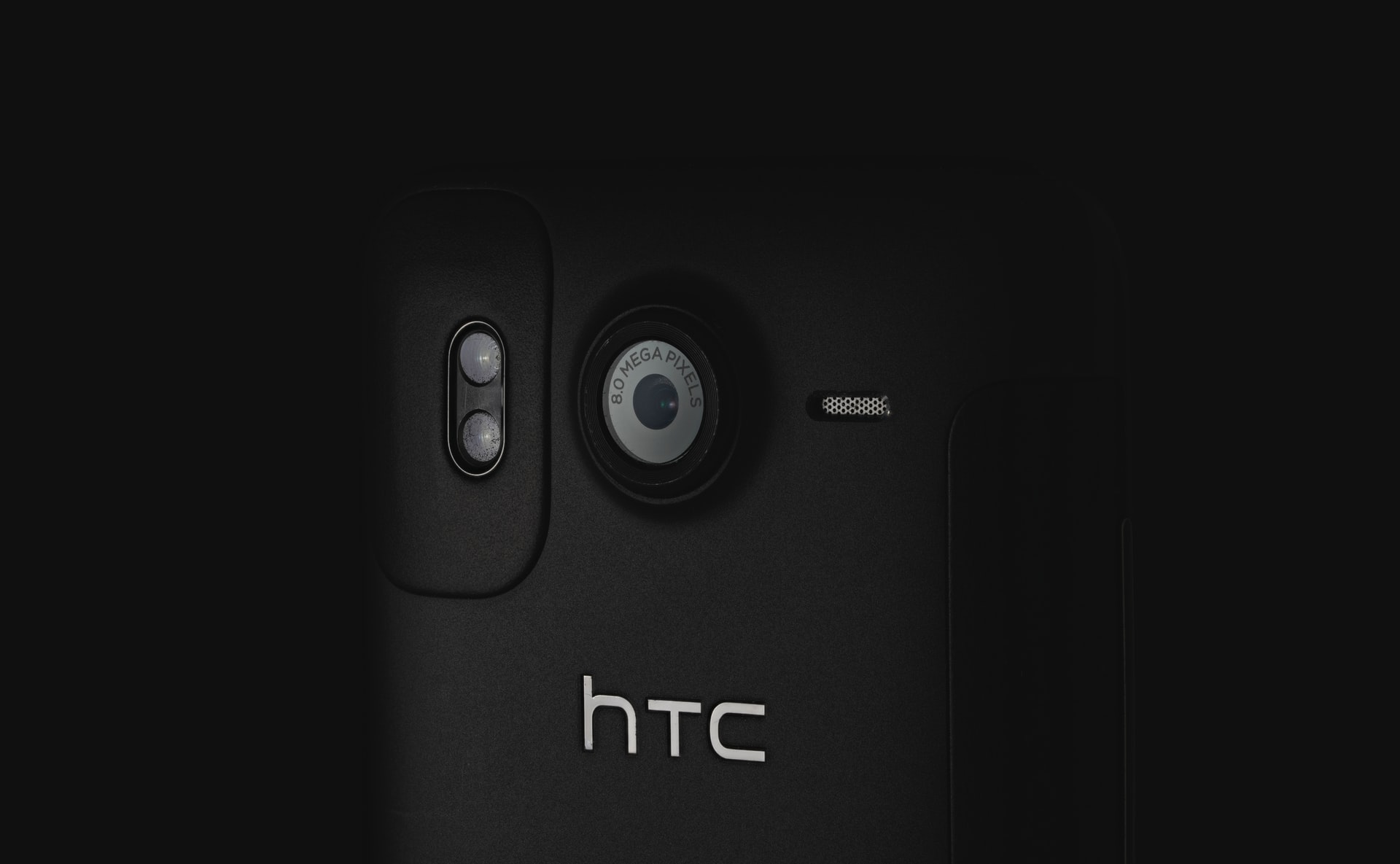
Pixels are the smallest component in a digital image. They combine together to form a picture. Megapixel (MP) is the total number of pixels an image contains. Here, mega means million, thus, megapixel means millions of pixels in an image.
Megapixel is a subjective term and holds different meanings. In cameras, megapixels may denote the number of “photosites” an image sensor contains. Photosites are the photosensitive elements that collects light before converting them into digital signal. Thus, if a phone has a 12MP camera, it’s sensor can capture 12 million pixels in one time.
In general, having more megapixels gives you a better freedom. You can crop in or zoom without having to lose the quality of image. However, having more megapixels does not assure you a better photo. In fact, a 12MP camera could shoot a better image than a 48MP camera. We will discuss this in depth below.
Is megapixel really important?
In short- megapixels is important, yes. If a camera has higher megapixel count, you capture an image with better resolution. The details and highlights are well preserved, the image can be zoomed or cropped without having to lose quality. As said above, the image is more flexible to play around.
But – a big but – the way smartphone companies are sensationalizing Megapixels for marketing, it is deceiving and mocking general consumers in a large scale. The hype created by companies like Xiaomi and Realme, even Samsung for the Megapixels is a pitfall of deception; it is making people believe that higher megapixel count ensures a better-quality image, which is not true. You can have a 64MP camera and still capture bad photo than one with 12MP. Google and iPhone stick with low megapixel count, yet they have one of the best images in smartphone industry. It is because other factors like sensor size, pixel size and post processing matter more than the number of Megapixel count a camera offers. So, sure! look for megapixels but look deeper for bigger camera sensor prior to that.
Aperture

An aperture is a hole or an opening through which light travels. The Aperture of a lens determines how much light the lens lets in. It is expressed in f-stops (e.g. f/1.4, f/2.0, f/2.8 and so on).
A f-stop of f/1.4 means wider aperture whereas f-stop of f/22 means narrow aperture. A wide aperture lets more light in and conversely, a narrow aperture lets less light in. Good control of aperture will let you capture a desired image in any lighting condition.
Aperture values are normally adjustable in digital or traditional cameras. But in smartphones, cameras are assigned a fixed aperture value during the time of manufacturing. Since smartphone cameras are famously small, they need every bit of light as possible to ensure a brighter and better image. Thus, larger the aperture, better a deal in a smartphone.
(If you are confused between larger and smaller aperture, let me explain. Take an example, one sensor has f/2.0 aperture and the other has f/1.4 aperture. The lesser the denominator value, larger is the aperture. In this case, sensor with f-stop of f/1.4 has larger aperture which is better.)
Depth of Field

Depth of field for dummies is the amount of your photograph that is in focus. It is a zone that is not blurred while taking photos. This “zone” varies from picture to picture; some pictures can have deeper depth of field while some have shallow depth of field. And depth of field has been used since the beginning to influence the composition, emphasis and story of your picture.
A shallow depth of field means the subject is in focus and appears sharp whilst the background is blurred. A shallow depth of field has smaller zone of focus and, normally, only main subject is in focus. Meanwhile, deeper depth of field means the zone of focus is large and the front and back of the object are not blurred. Deeper the depth of field, more the objects in frame are focused.
Shutter Speed
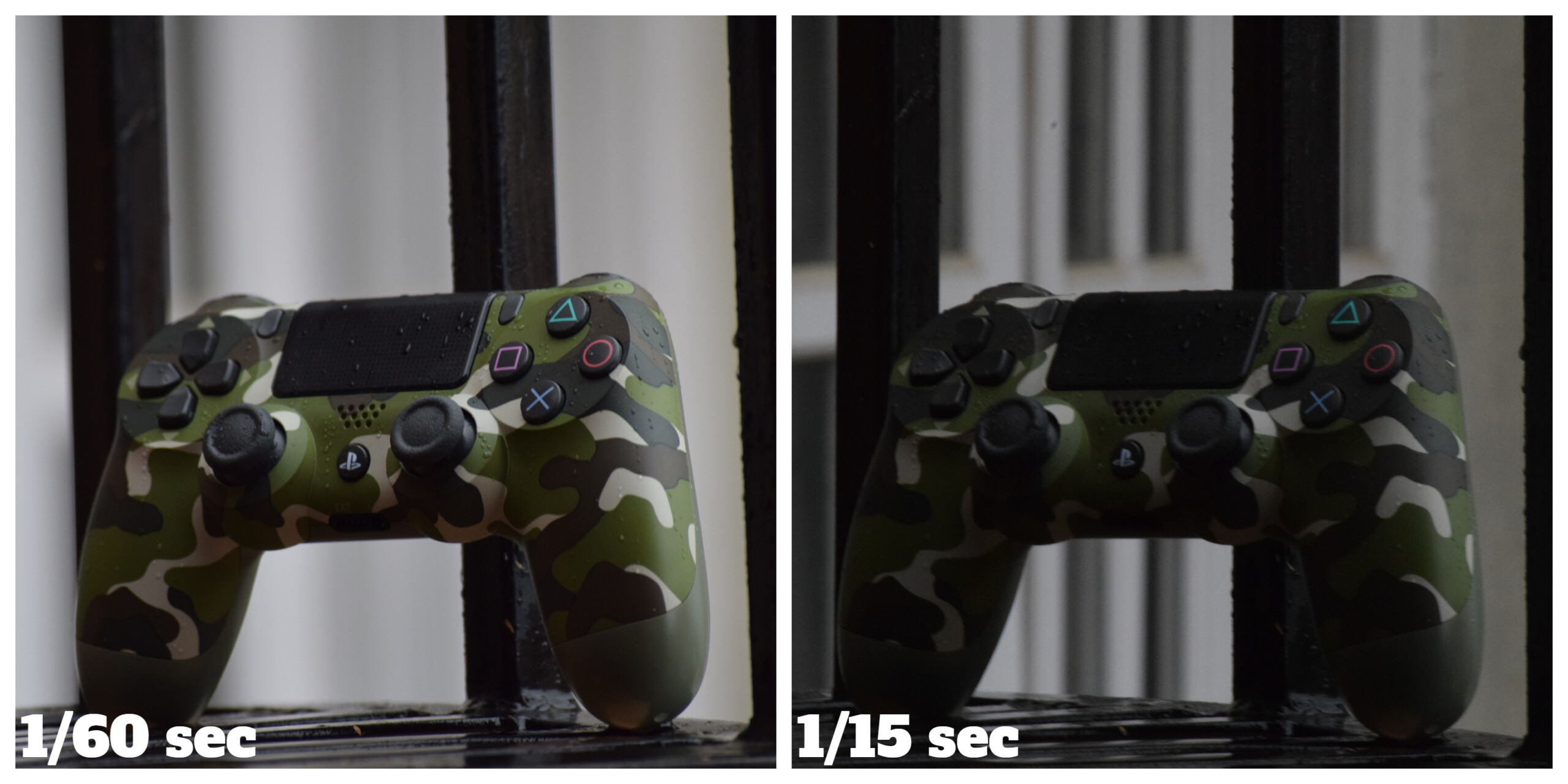
When you press the shutter button to take a picture, the shutter of your camera opens and the sensor is exposed to light. The total amount of time for which the shutter remains open is called shutter speed. It is measured in fractions of second.
The faster the shutter speed, lesser it takes time to shoot a photo. Hence, they are less blurry. This is why images are taken with a faster shutter speed during sports in order to capture the exact movement without any shakes or blurs. One downside of faster shutter speed is the underexposed(dark) photos. Since, with fast shutter speed, the image sensor is exposed to light for a very less time- the image produced is dark and poor in low light conditions.
In the same way, a slow shutter speed exposes light to the image sensor for an extended time. This means the sensor is able to capture more light and the images, hence, are expected to be bright and lit in low light conditions. However, with a slow shutter speed, the photos are prone to blurs and shakes as the objects are constantly moving for a single frame. Due to this reason, people are always proposed to use a tripod while capturing photos with slow shutter speed.
The play between shutter speed, aperture and depth of field
These three disciplines quite intersect each other in the digital photography vein diagram. Shutter speed, aperture and depth of field affect each other, meaning- one can induce the other.
Let’s start with shutter speed and aperture. If you are working on manual mode- you must establish a balanced relationship between shutter speed and aperture to capture a desired photo. As said earlier, aperture decides the amount of light a lens lets in. Similarly, shutter speed determines the amount of time to let the light in. The wider you set your aperture, more the light you allow through to reach the sensor which allows you to use a faster shutter speed. Conversely, if you keep your aperture at a narrow setting, you’ll let less light through and need a slower shutter speed to maintain the correct exposure.
For example, if you need to capture an image of a dog right when he looks at you, that is when a faster shutter speed is crucial. However, if you need to capture an image of your friend in a dire light condition, you would want to maximize the shutter speed and allow as much light as possible.
That was shutter speed and aperture. But you would be surprised to know how much an aperture determines the depth of field in a picture. Larger the aperture, shallow will be the depth of field and conversely, narrow the aperture, deeper will be the depth of field. It may all be confusing, but these photos will surely remove your confusions.
As you move closer to your subject, your background becomes blurrier. And you get shallower depth of field.
Although the smartphones lack fidelity in aperture values, you can play around with other values like shutter speed, ISO and focal distance to get a desired image.
Even though most of the smartphones have fixed aperture, Samsung started using variable aperture lenses in their Galaxy S9 and S10. It has however been dropped with their current flagship Galaxy S20.
Optical and Electric Zoom
Zoom refers to the process of making an object appear nearer than they are. There are two types of zoom in photography- optical zoom and digital zoom.
Digital Zoom– Not trying to take your time, digital zoom is nothing but crop. No question asked.
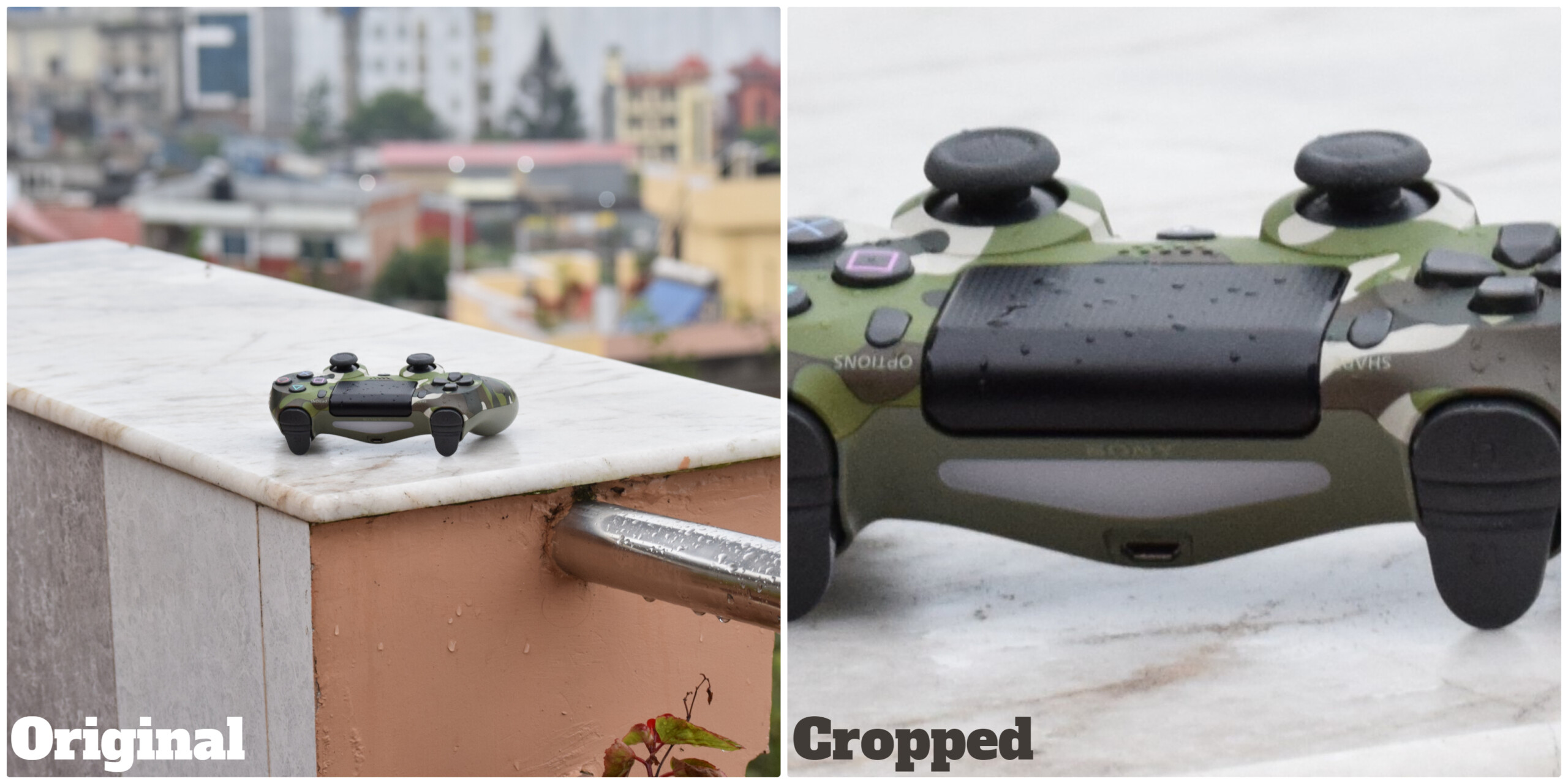
Optical Zoom– Optical zoom, unlike digital zoom, is the truest form of zoom. Normally in digital cameras, lenses have moving parts. The glass elements inside lens move back and forward to provide you a magnified image. This totally works on the principal of optics. But as we know smartphone cameras do not have moving parts, how do optical zoom works? Well, the moving parts are compensated with multiple lenses. For optical zoom, smartphones have secondary lenses with longer focal lengths to obtain an optically zoomed image. So, whenever you press 2X or 4X zoom in your smartphone, if you have optical zoom, your smartphone seamlessly switches from primary lens to zoom or telephoto lens to give you a zoomed image.
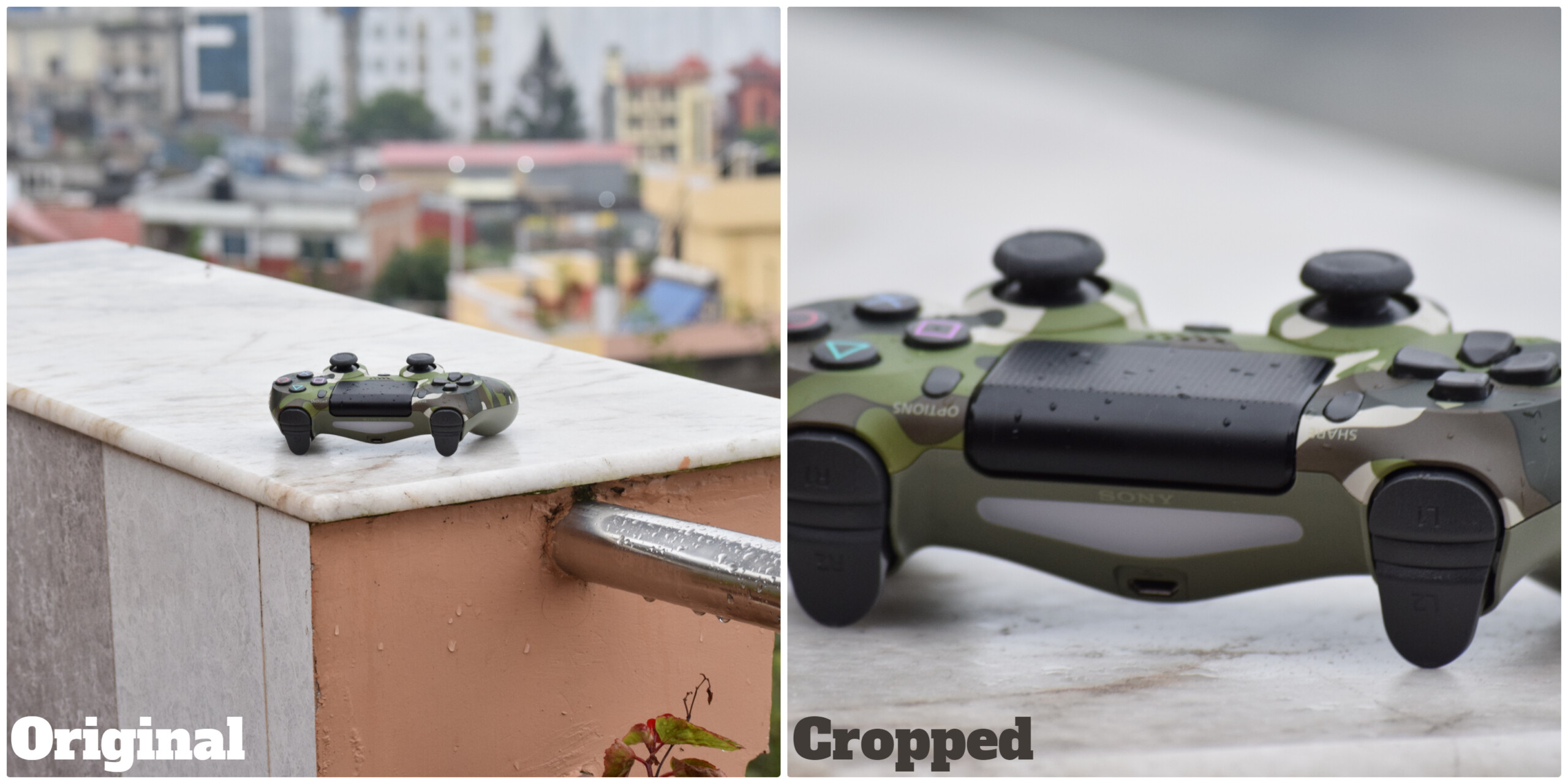
Hybrid Zoom– Hybrid zoom is a smart and relatively new concept in photography. Hybrid zoom utilizes both digital zoom and optical zoom to capture a zoomed image and then uses computational photography and software processing to create an enhanced, better image.
See, for example: – Huawei P30 pro has 5X optical zoom. But if you zoom further than 5X, you will be cropping your image (technically using digital zoom). This is where hybrid zoom plays its role. So, whenever you zoom further than 5X, the hybrid zoom uses computational photography and software processing to give you a detailed and lossless image quality of your zoomed image. Huawei P30pro has 10X Hybrid zoom, thus you can zoom an image twice beyond optical zoom.
New phones, mainly flagships, have been implementing periscope zoom method. Read more the find about periscope zoom in smartphone lens category later.
The marketing strategy and hype of zoom

“Zoom” is now weaponized as a marketing hype for many people. Nowadays smartphone companies have been pushing “zoom” as a marketing term more than ever. The marketed zoom is nothing but swindle, false and misguide. It doesn’t ensure if the quality of zoomed image is clear, sharp and better. In fact, the maximum zoomed image is barely useable without stable hands or tripods.
Companies have been falsely advertising zoom without providing any clear information. For instance: – Apple’s iPhone 11 pro advertises that its telephoto lens offers 2X optical zoom but in reality, it has 1.4X optical zoom while rest is assisted by software algorithms. The company has not mentioned clearly that the actual optical zoom that its telephoto lens offers is 1.4X only. Similarly, Realme used fancy words like “60X Periscope SuperZoom” while in reality, it has a 5X optical zoom (rest is assisted by software algorithm). Apple, in comparison, is least that has touted it’s zoom for marketing. Companies like Xiaomi, Samsung, Realme and Oppo have been creating hype around zoom cameras for quite a time now.
The optical zoom mentioned here refers to the telephoto zoom in case you got confused, it is same.
Stabilization
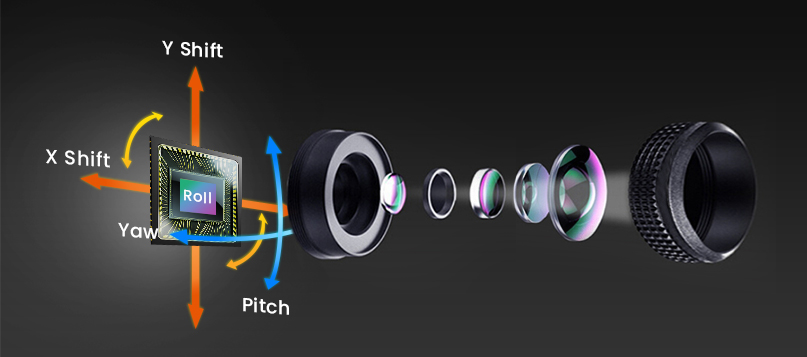
Often in the past, the videos shot from phone cameras used to be all jittery and blurry. Hands are ill famous for being shaky and moving. To overcome hitch, video stabilization was introduced. To make videos steady, smartphones use two stabilization techniques- Optical Image Stabilization (OIS) and Electronic Image Stabilization (EIS).
Optical Image Stabilization (OIS) is much similar to gimbals. Smartphones with Optical Image Stabilization have small motors fit with their image sensors – which move on a gyroscope system – to counteract the movements of the phone. OIS is mostly available in premium range smartphones these days. Optical Image Stabilization or OIS can be really useful if you have zoom camera on your phone as it reduces the shakes as you zoom in, or, if you are shooting a picture in lower shutter speed helping avoid blurs and trails.
Electronic Image Stabilization (EIS) is a software convinced stabilization system. EIS does not really stabilize your footage rather makes them appear stabilized. This technique shifts the electronic image from frame to frame of video, enough to counteract the motion.[26] It uses pixels outside the border of the visible frame to provide a buffer for the motion. This technique reduces distracting vibrations from videos by smoothing the transition from one frame to another. This technique does not affect the noise level of the image, except in the extreme borders when the image is extrapolated. It cannot do anything about existing motion blur, which may result in an image seemingly losing focus as motion is compensated. Wikipedia.
Smartphones these days use both OIS and EIS simultaneously to provide you a steady, non-blurry and an immersive video.
Understanding secondary lenses in your smartphone
Each smartphone camera is equipped with a lens to bend and direct light, and a sensor to capture it. There are various lenses that serve various purposes. Here is some brief instigation of lenses used in smartphone cameras.
Wide Angle Lens
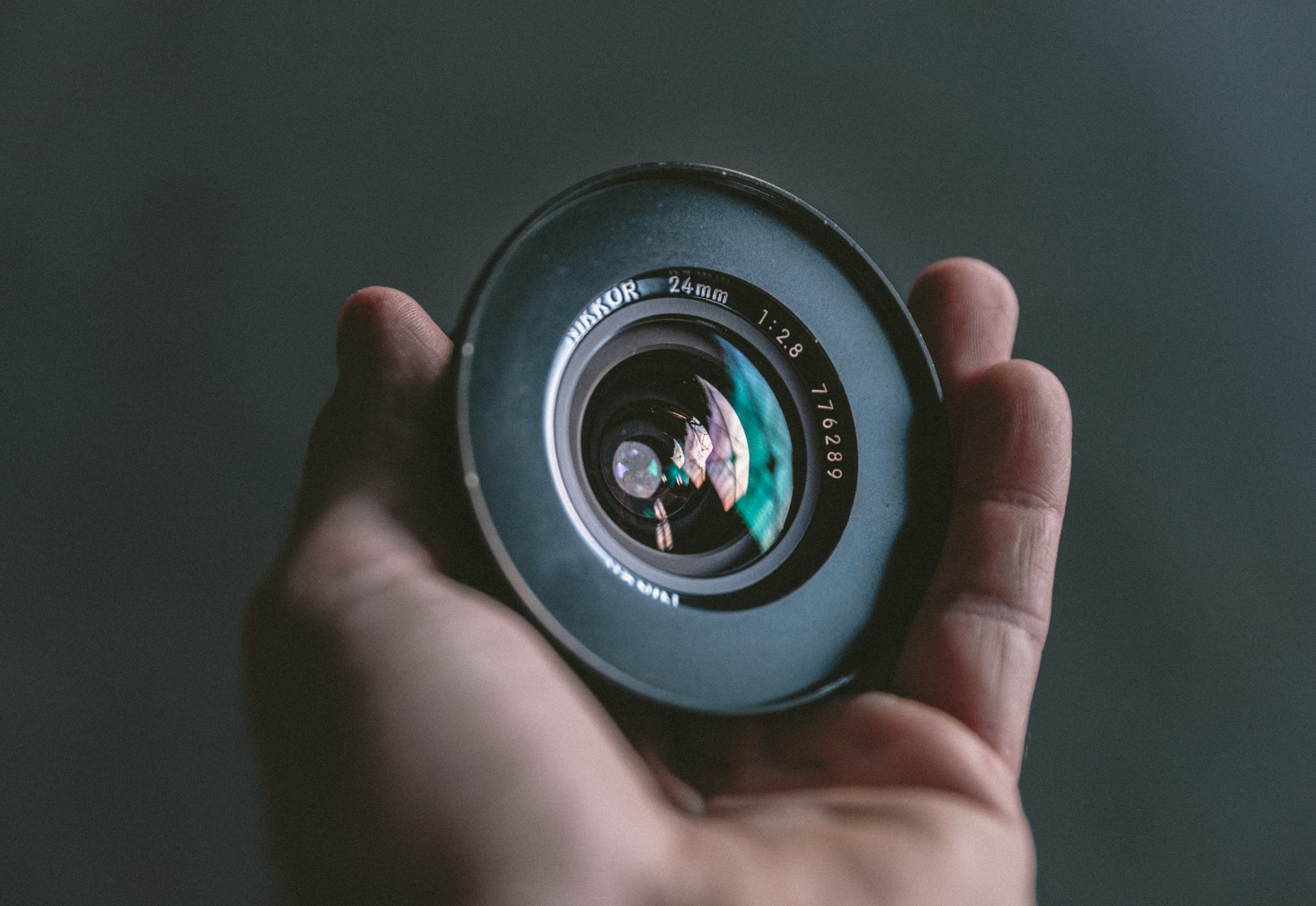
Wide angle lens, as the name suggests, captures a wider field of view- much similar fraction to a human eye. Wide angle lenses are most common type of lens used in smartphones. Even the phones with single camera setup use wide angle lens for its versatility. Presently, the lion’s share of primary camera is acquired by wide angle lens. The focal length for these types of lenses varies from 24mm – 35mm. As the focal length decreases, wider will be the field of view.
Ultra-Wide-Angle Lens

Ultra-wide-angle lens is the other most featured lenses in smartphone camera these days. These lenses offer extremely wider field of view. The 12MP ultra-wide-angle lens used in Samsung S20 series provides humongous 120˚ field of view. The focal length of these lenses ranges from 8mm – 24mm and as the focal length decreases, field of view increases. However, with small focal lengths, the subjects start curving/ distorting from the edges developing a fish-eye effect. Ultra-Wide-Angle Lenses are often utilized by photographers to shoot stunning landscapes, cityscapes, interiors and panoramas by accommodating more subjects and details into the shot.
Telephoto Lens

Telephoto, in contrast to wide angle lens, captures a zoomed and close-up image. They have narrower focal length and are equipped for distant photography. As we have discussed earlier, telephoto lenses provide optical zoom to capture a high-quality zoomed image- be a statue mile away from your home or a fly on your celling. Telephoto lens is often exploited in portrait shots because combing it with other lenses, your smartphone calculates how far is the subject from background yielding you an urbane bokeh.
Periscope Lens

Periscope lens uses the same technique of bending and reflecting of light. Classically, periscope is a tube that is equipped with mirror mounted 45° at each alternate angle. When light strikes at the one end, it bends and strike on other end and is finally screened on eyes.
A periscope uses same principle but with just a single mirror that bends the light by 90°.
It is mainly used because periscope lenses have extended focal length due to prism mirror used inside, which provides greater optical zoom. Plus, unlike other lenses which needs to be resized in order to increase the focal length, thereby increasing the camera bump; periscope lenses do not need to be protruded.
Time of Flight (Depth Sensor)
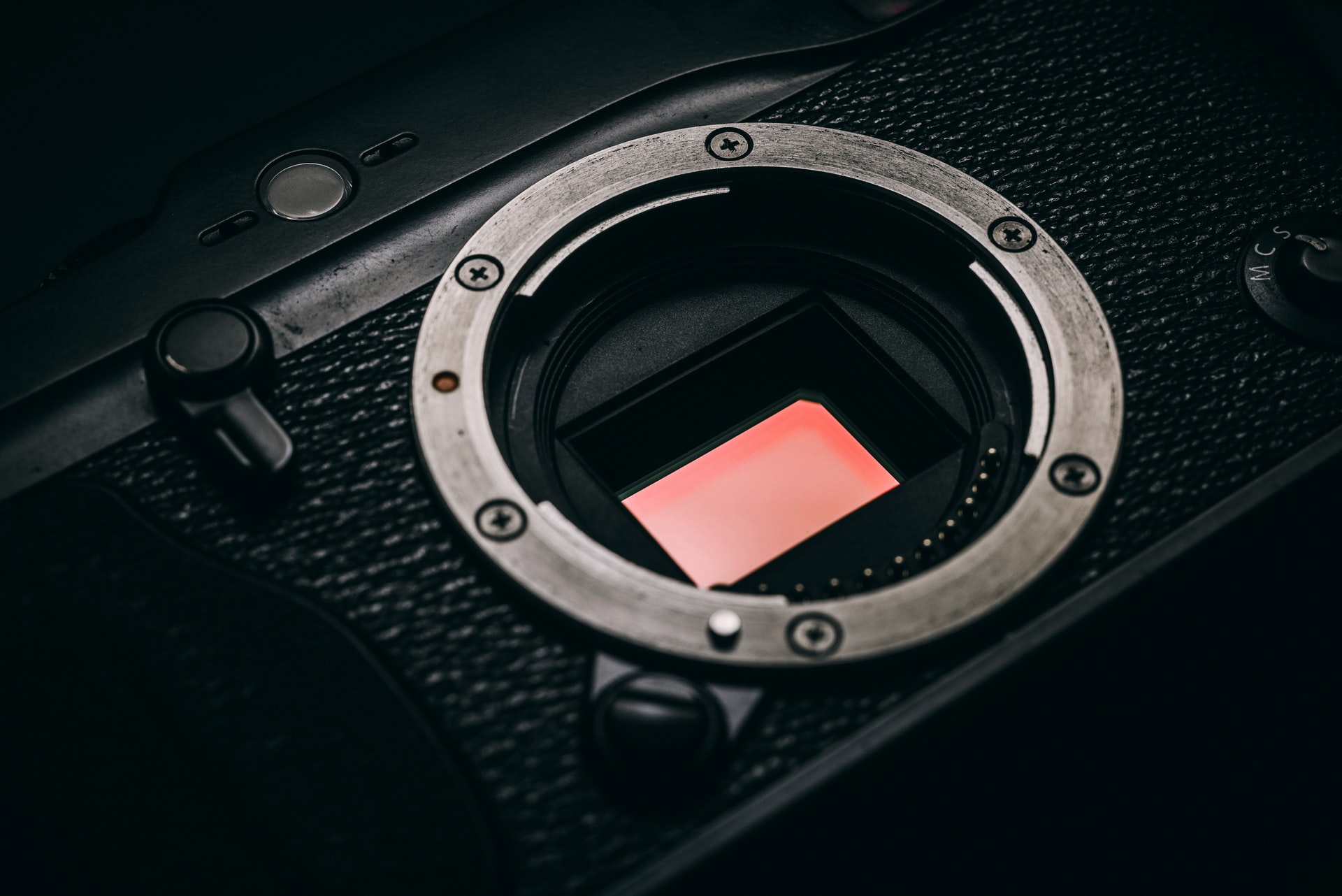
A depth or Time of Flight camera is a special purpose camera which is used to create a 3D map of the image you want to take. A “true” time of flight sensor actually projects laser, creates 3D map and calculate the distance between foreground and background. This information is later processed to create a picture with blurred background, imitating bokeh effect.
These days, most of the phones flaunt depth sensor front and back. While truth be told, they are really inconsistent. Even so, the image difference is so barely noticeable. For example: the 2MP depth sensor in Realme X2 gives no edge over normal photo- I bet if you could find any difference. To check if your depth sensor really makes any difference, here is a fun experiment; take a picture in depth (or portrait) mode first. Then cover your depth sensor and click the same photo in depth (or portrait) mode again. Do you find any difference? Do write us in comments.
Macro Lens

Macro photography is extreme close-up photography, usually of very small subjects and living organisms like insects, in which the size of the subject in the photograph is greater than life size. By the original definition, a macro photograph is one in which the size of the subject on the negative or image sensor is life size or greater. Wikipedia.
Pixel Binning Simplified
In simple words, pixel binning is the process of combining multiple pixels into one large pixel, in doing so, increasing the amount of light captured and decreasing the noise. You have already known that larger the pixel size, better the image. But due to the size limitation in smartphones, a single pixel can’t capture much light in smartphone cameras. Pixel binning accords a unique proposal which gathers charges from the nearby similar pixels, combines them to form a one big pixel. The binned pictures are then enhanced by AI and algorithms to appear better.

Most smartphones suffer from grainy and bad quality image in low light. It is because of small pixel size as they can’t capture enough light. Pixel binning brings a simple solution and your image looks much better. Smartphones nowadays perform superior in dire light conditions, thanks to pixel binning technology.
One draw back pixel binning brings is downsizing of resolution. Since 4 pixels is combined into 1, total resolution of image is reduced by the factor of 4. For example, Huawei P30 pro has 40MP primary camera: upon pixel binning (4 pixels combine into 1), the image resolution reduces to 10MP. This means less details are captured.
It would be rather beneficial if smartphones could upscale the sensor size than use pixel binning. That way phone could naturally perform better in low lighting conditions and still retain details and highlights in the photos.
Best Camera Smartphones
Here is our list of best camera phones in 2020.
| S.N | Smartphones with Best Cameras |
| 1 | iPhone 11 Pro |
| 2 | Huawei P40 Pro Plus |
| 3 | Samsung Galaxy Note 20 Ultra |
| 4 | Samsung Galaxy S20/S20+ |
| 5 | Google Pixel 4XL |
| 6 | Sony Xperia 1 II |
| 7 | OnePlus 8 Pro |
| 8 | Xiaomi Mi Note 10 |
| 9 | Google Pixel 4a |
| 10 | Realme X3 |
Parting Words
Welp, wow! did you reach the end. I hope you guys got to know something more. These are the basics of the surficial terms in photography that every pro photographer or now aspiring photographers are bound to know before fiddling with the lights, lens and manual modes. The resources for this article are taken from all over the internet and I would like to duly acknowledge them. Thank you.
Tech enthusiast and a movie fanatic.








2 Replies to Everything You Need to Know Before Buying a Camera Smartphone
How To Remove Bloatware From Any Xiaomi Devices (Without Root): Easiest Way!
The Ultimate Desk Setup Guide
Fantastic Windows 10 Icons And How To Install Them
The Minimalist Setup for Android Devices
Realme Watch 2 Launched: A Worthy Upgrade?
iQoo 7 Launched: Price, Specifications & Launch Date in India
Mi 11 Ultra: Into The Reckoning !!!
Surface Laptop Go Launched in India: The Most Affordable Surface!